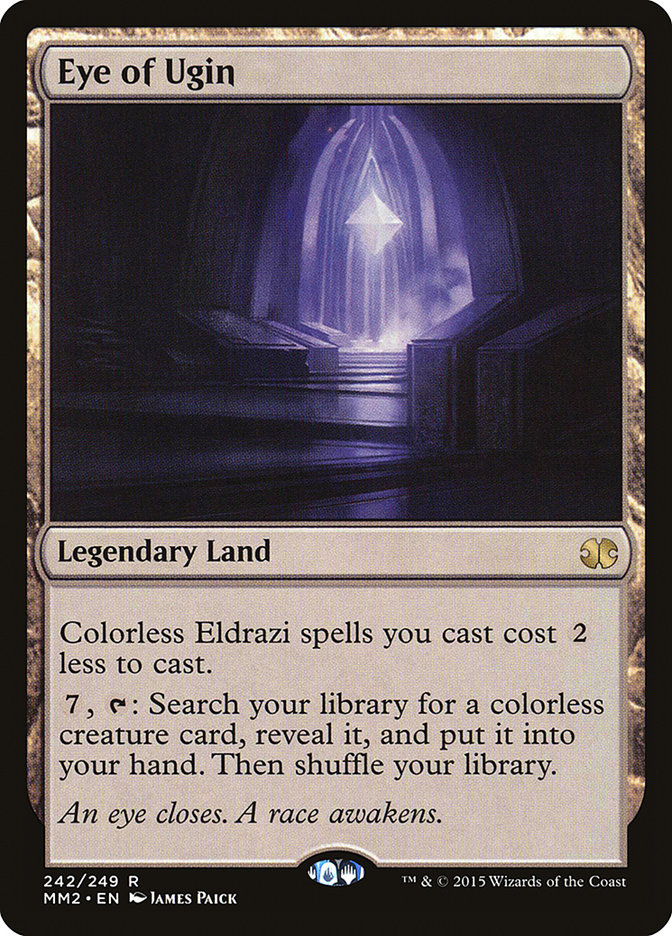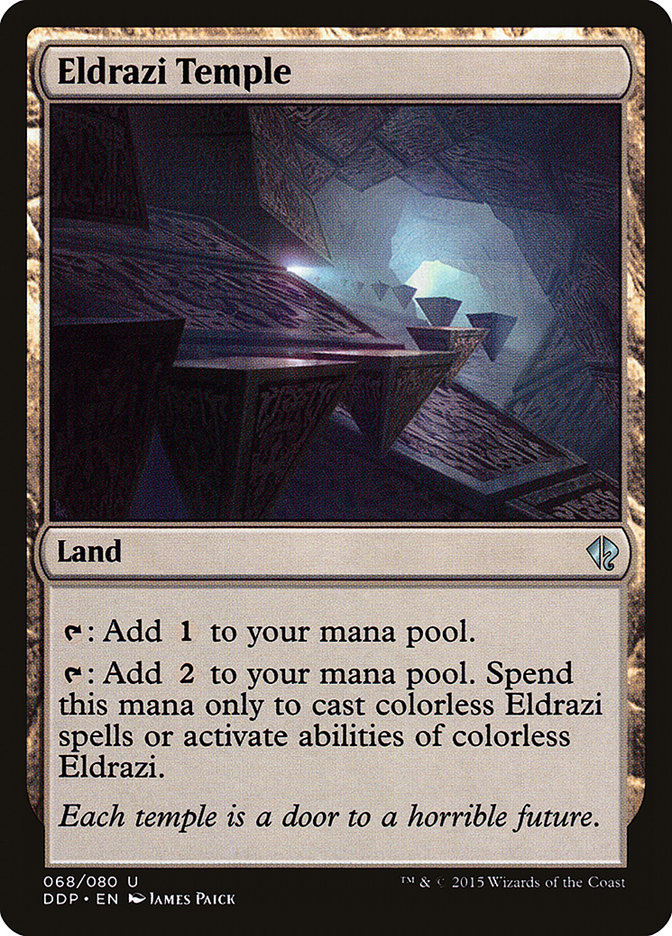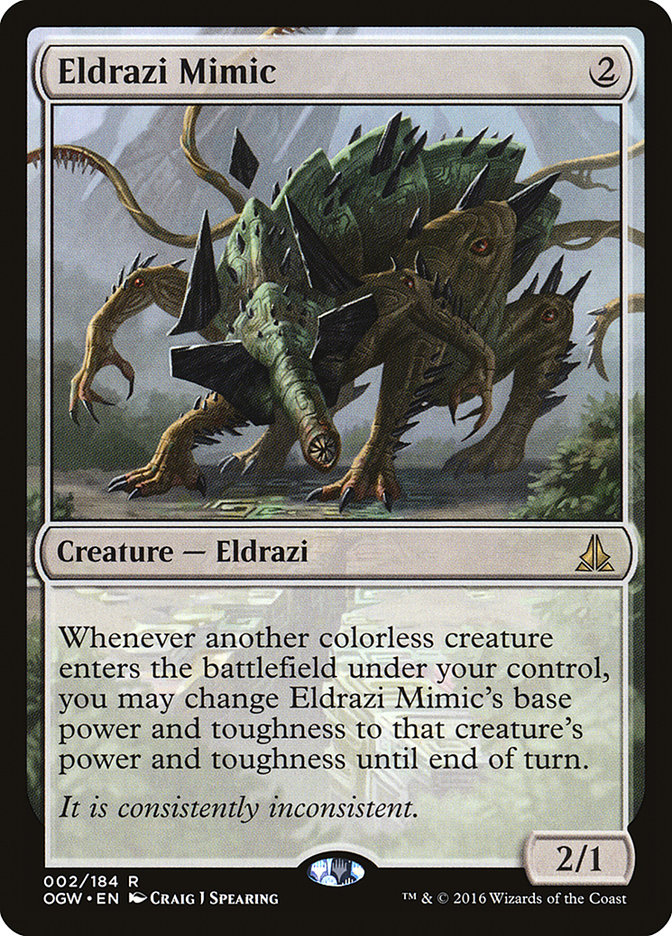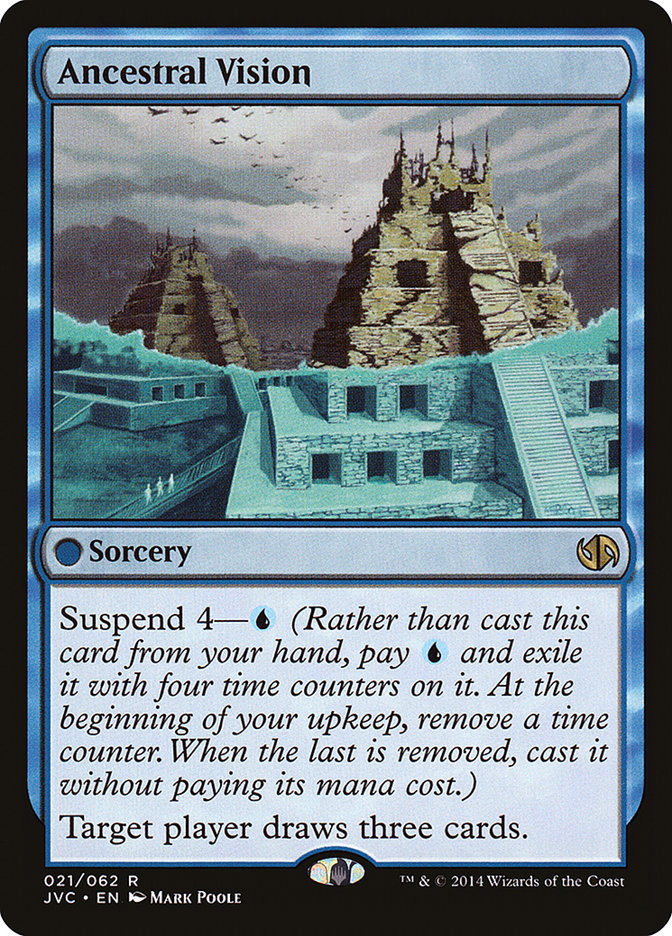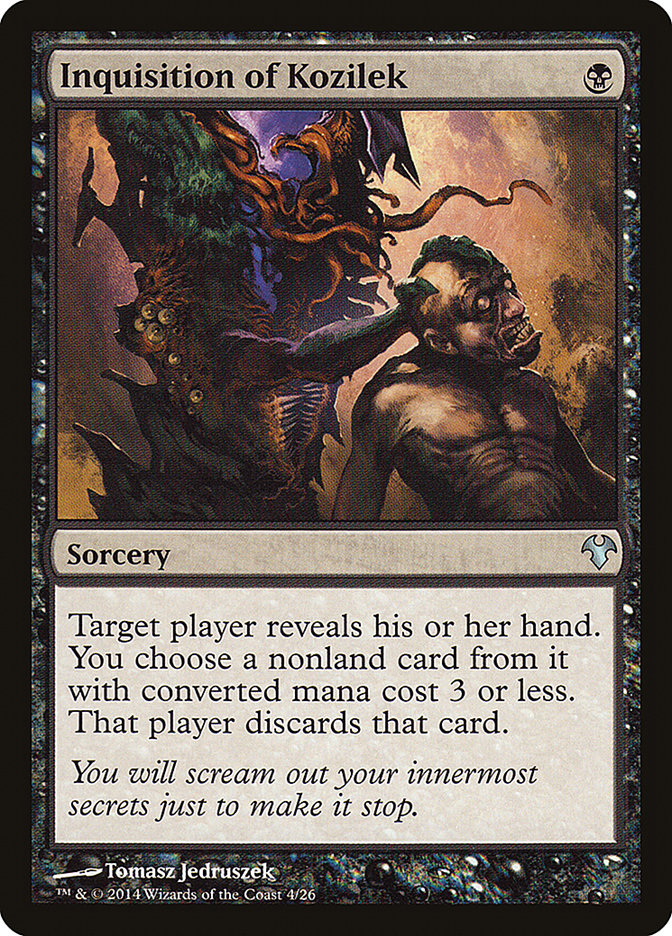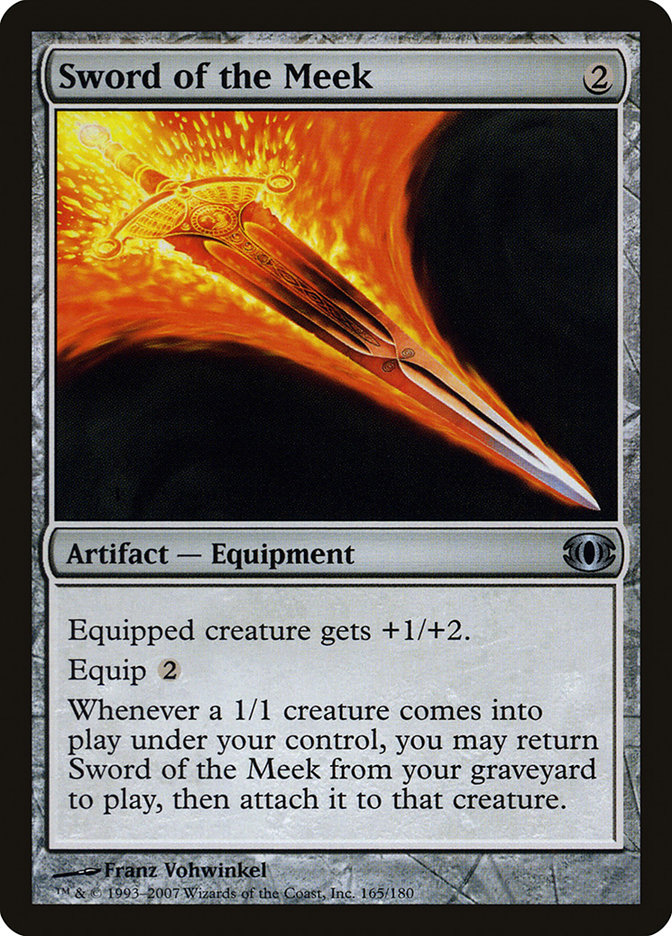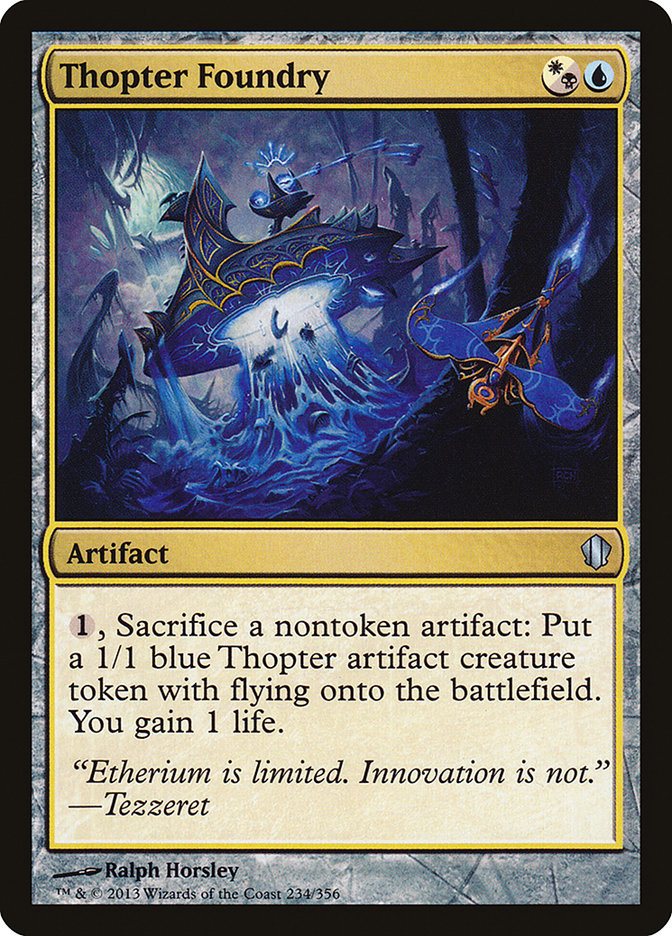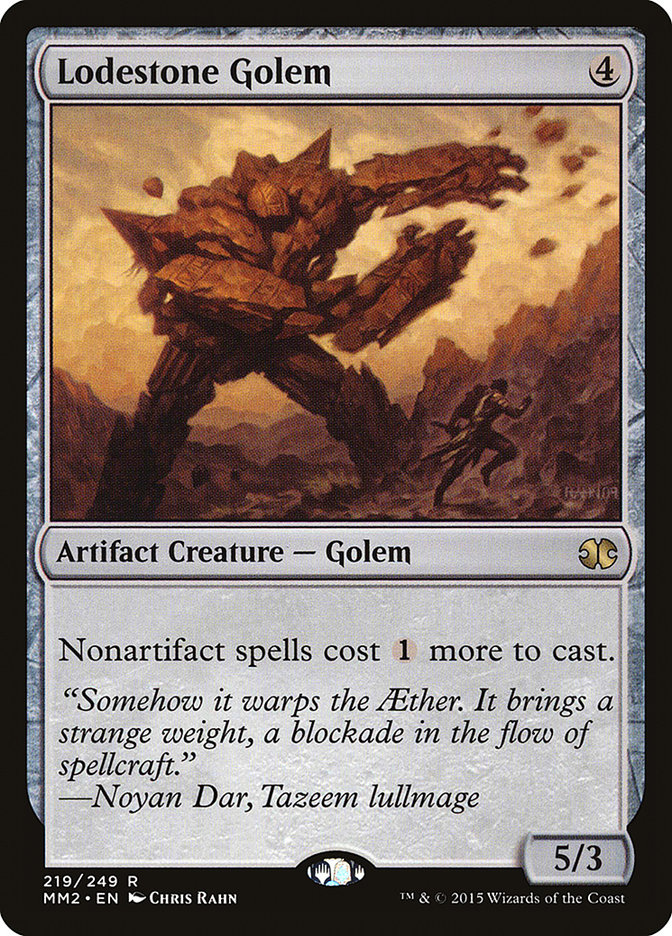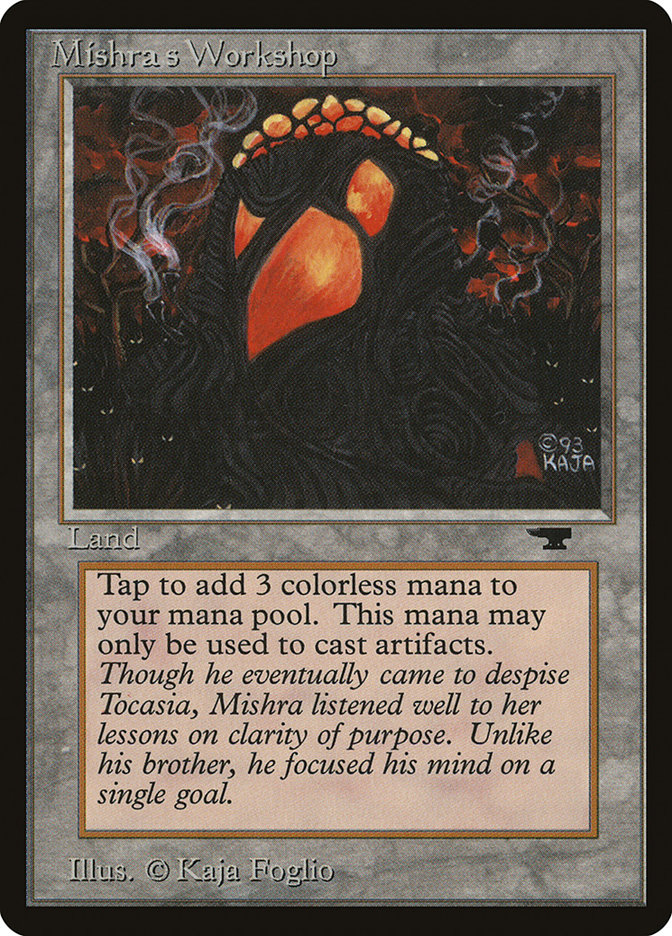About a week ago, I remember turning on my computer, anxious and excited to play some Magic Online, but I was struggling to find a format that wasn’t going to be completely turned upside down within a few days. We just had a fun Prerelease weekend for Shadows over Innistrad, allowing us to explore fresh Limited and Standard formats. After the recent Banned and Restricted Announcement, Modern is a whole new format, yet again. For those of you living under a rock, here is what happened:
Modern:
Eye of Ugin: Banned
Ancestral Vision: Unbanned
Sword of the Meek: Unbanned
Vintage:
Lodestone Golem: Restricted
It was obvious that something had to be done to overthrow the Eldrazi taking over major Modern tournaments since the last Pro Tour. Eldrazi decks were nearing 50% of the Day 2 fields of major tournaments such as Grand Prix and the SCG Tour®. This was simply unheard-of in Modern, a format known and loved for its diversity. The only real question leading up to this ban was whether Eye of Ugin or Eldrazi Temple would get the ax.
Personally, I initially was an advocate for banning Eldrazi Temple until thinking about it and discussing it a little more. I thought taking away a tool from Tron decks was simply unnecessary. Tron was already in a weird spot of being a decent deck that didn’t have many results to back up how popular it was. Eye of Ugin is a key piece of the Sylvan Scrying package, searching up a big threat as a land that worked perfectly with the Tron pieces. After thinking about it more, there are two reasons I like the banning of Eye of Ugin over Eldrazi Temple.
First of all, if an Eldrazi deck is still going to be relevant in Modern, the ability to have two Eldrazi lands on the battlefield is how the deck can still get an explosive start. Keeping Eldrazi Temple allows us a draw with an Eldrazi Mimic on turn 1 followed by a turn 2 Thought-Knot Seer. Such draws will be rare but may leave the deck competitive, which is something I am a big proponent of. Do I think an Eldrazi deck will still be good or great in Modern still? I am really unsure.
My instincts say that a true Eldrazi deck like we’ve seen dominate Modern for a few months now won’t be all that great without both of the lands. The deck was really fueled by its ability to churn out fast starts on the back of its lands, while its disruption elements hinged mostly on a quick Thought-Knot Seer tying up their plan for a couple of turns, giving us enough time to beat them while they recover.
That leads me to reason number two why I like banning Eye of Ugin over Eldrazi Temple. We can slot Eldrazi Temple, Thought-Knot Seer, and perhaps Reality Smasher into some decks that aren’t completely focused on Eldrazi themes. A deck we tested with for a short period of time for the last Pro Tour was a B/G-based deck merely playing Eldrazi Temples for Thought-Knot Seer. I could see a deck like this being the “new Jund.” Wasteland Strangler may find its way into some decks along with Thought-Knot Seer and Eldrazi Temple because of its ability to process a suspended Ancestral Vision, a new addition to the Modern format.
All that said, I’m strongly onboard with the banning of Eye of Ugin, and I think we may get to explore some sweet new ways to build decks including Eldrazi Temple and only a few Eldrazi instead of a whole deck devoted to them.
I decided I was going to write an article on the Banned and Restricted Announcement a week ago. I was all prepared to write a “what happened and what should have happened” piece. Wizards has been known to only make impactful changes to Modern leading up to a Pro Tour. Ancestral Vision was going to be my top “what should have been unbanned” card.
I applaud Wizards on this one. Ancestral Vision is a great Magic card that is sure to give blue mages a much-needed boost.
The card-draw spells blue had in Modern were just too lackluster. Sphinx’s Revelation saw some play, but it was incredibly slow and expensive for a format filled with Infect, Affinity, and Burn decks. Sphinx’s Revelation also lined up poorly against Jund-style decks that could Thoughtseize or Inquisition of Kozilek the Sphinx’s Revelation on many different turns of the game. We could simply take other cards as well and eventually get the Sphinx’s Revelation with a Liliana of the Veil activation.
In fact, you don’t even need to get the Sphinx’s Revelation with a Liliana of the Veil activation; if Liliana is on the battlefield for a couple of turns, the blue mage will be too low on resources for the Sphinx’s Revelation to dig them out of the hole they are in. Thirst for Knowledge was another option that saw some play, but without including artifacts it nets us no cards, only selection, and with artifacts it still only nets us one card.
With Ancestral Vision we get to suspend it on turn 1, protecting our card-draw spell from hand disruption, and then refuel our hand on turn 5 without investing any further mana. This leaves us free to cast spells and be reactive until we get to Ancestral Vision. There are usually very few turns, if any, a reactive deck has to take off from interacting in Modern. Investing an entire turn to draw some cards in the middle of the game can often give the opponent the time they needed to set up an insurmountable battlefield advantage, making expensive draw spells not good enough.
Ancestral Vision isn’t expensive by any means, but it’s slow. This was one of the huge reasons I don’t think the card is too powerful for a fast format like Modern. These decks that consistently goldfish on turn 4, with explosive enough draws, may not let you live long enough to reap the rewards of your suspended turn 1 Ancestral Vision. The last time I played Modern before Eldrazi took over the format was in Pro Tour testing. The initial testing stages of the format were just matchups between extremely linear decks, such as Burn against Affinity or Infect against Death’s Shadow Zoo. I remember watching and playing these games that ended on turn 3 and 4 frequently and thinking about how Ancestral Vision would still be suspended, or how Bloodbraid Elf would still be stranded in my hand as the game ended.
I was just confused why a four-mana spell and a card that doesn’t resolve until turn 5 were too powerful for a format where most games ended or were ultimately decided by turn 4. There is also a cost to putting four Ancestral Visions in your deck. It’s not a good card in later turns because it simply might not come off suspend in time before a game ends. For this reason, including four Ancestral Visions also has its downsides.
The inclusion of Ancestral Vision will incentivize more reactive Magic, causing longer games, but this is great for the format. Cheap reactive spells such as discard and removal work well with Ancestral Vision, allowing you to prolong the game and reload your hand. Oddly enough, Snapcaster Mage also works quite well with cheap interactive spells, so I expect both of these cards to work well together despite not being able to cast an Ancestral Vision in the graveyard with a Snapcaster Mage.
These two cards are likely to make up the core of blue decks from here on out in Modern. Don’t forget we also got a cool new toy to play with out of Shadows over Innistrad, Thing in the Ice. It seems like Thing in the Ice will work reasonably well with a bunch of cheap spells, Snapcaster Mage, and Ancestral Vision. I think Ancestral Vision will likely be a Modern staple moving forward.
Blue found another meaningful two-card combo with the unbanning of Sword of the Meek. Sword of the Meek combined with Thopter Foundry turns any one mana lying around into one life and a 1/1 Thopter token. This is a blatantly powerful combo that was once a powerhouse of Extended prior to the existence of Modern. Sword of the Meek has been on the ban list since the creation of Modern with the fear that it may be too powerful a combination.
Thopter/Sword can be slowed down and shut down by both artifact removal and graveyard hate, however. This makes the combo very easy interact with post-sideboard, and even some maindeck spells slow it down, such as Abrupt Decay and Kolagan’s Command, which were not cards when Thopter/Sword decks were running rampant in Extended.
That said, I don’t think having a couple copies of Abrupt Decay or Kolagan’s Command will be enough to keep the combo from seeing play. This combo may turn into the next Splinter Twin in that there could be a sideboard song-and-dance between both players over whether the combo stays in. This was one of the more fun elements of Splinter Twin, in my opinion.
This kind of combo will best fit a control deck that is looking to play a long game rather than punish an opponent for tapping out and winning on the spot like Splinter Twin did, so it won’t be able to play the “combo killer” role that Splinter Twin decks did for so many years, but it will give fair decks fits when played early. Being able to turn a mana into a 1/1 flier and one life at instant speed is too hard for fair decks to keep up with once assembled. We can tap out on turn 2 and 3 for our combo pieces without fear of dying against fair decks, never invest mana into anything else the rest of the game against a deck like Burn or Zoo, and likely win.
Affinity seems like it may have a difficult time with this combination of cards, but with Eldrazi on the decline and control decks on the rise, I’d expect stock Affinity lists to pack four Etched Champions, which conveniently enough can attack through these blue Thopter tokens, perhaps giving the robots a fighting chance. I think Thopter/Sword is a worse combo for blue than Splinter Twin combo was; however, I think it’s a very good replacement that will become an archetype worthy of notice from here on out.
Now, I am no Vintage aficionado, but I will touch on the Lodestone Golem restriction. The deepest my knowledge of Vintage goes is occasionally watching the Vintage Super League, while I’ve played almost no games myself. Yet I do understand the restriction of Lodestone Golem.
Mishra’s Workshop (“Shops”) decks are reliant on casting artifacts that increase spells costs by one early in the game, soft-locking the opponent from casting spells efficiently while killing them with some easier-to-cast artifact threats thanks to the namesake Mishra’s Workshop. Lodestone Golem was extremely efficient in this deck because it was both a lock piece and a giant threat. You could simply cast Lodestone Golem on turn 1 off a Mox and a Mishra’s Workshop and win the game without doing much of anything else. This seems like a great restriction from Wizards once again, especially from a viewer’s standpoint, where I couldn’t think of watching anything more boring than watching one person goldfish while the other player is unable to cast a spell. Again, that is only from the perspective of a viewer, not a competitive Vintage player.
Where Do We Go From Here?
I am pleasantly surprised, after a couple of what I’d consider uneventful Modern Pro Tour unbannings, to see such a high-impact set of unbannings in Modern. Control decks are the big winners with these unbannings, as Eye of Ugin was a key card for Tron in defeating control decks, and both Ancestral Vision and Sword of the Meek play into potential control deck builds in the future. I think viable control decks are important for the health of Modern and Wizards did a great job with these unbannings to give them a fighting chance in the format.
I have #PTSOI to start preparing for, but after that I’m really excited to explore the new Modern possibilities. I think Wizards did a terrific job this time around. What do you think?


